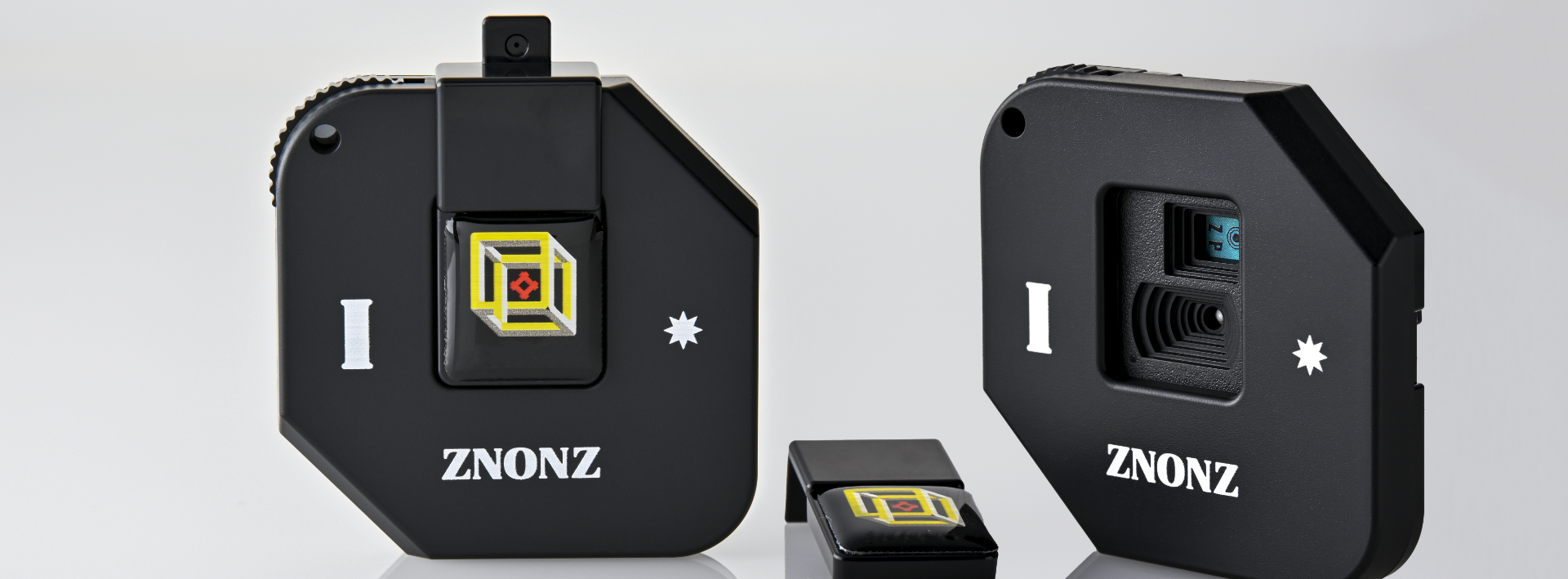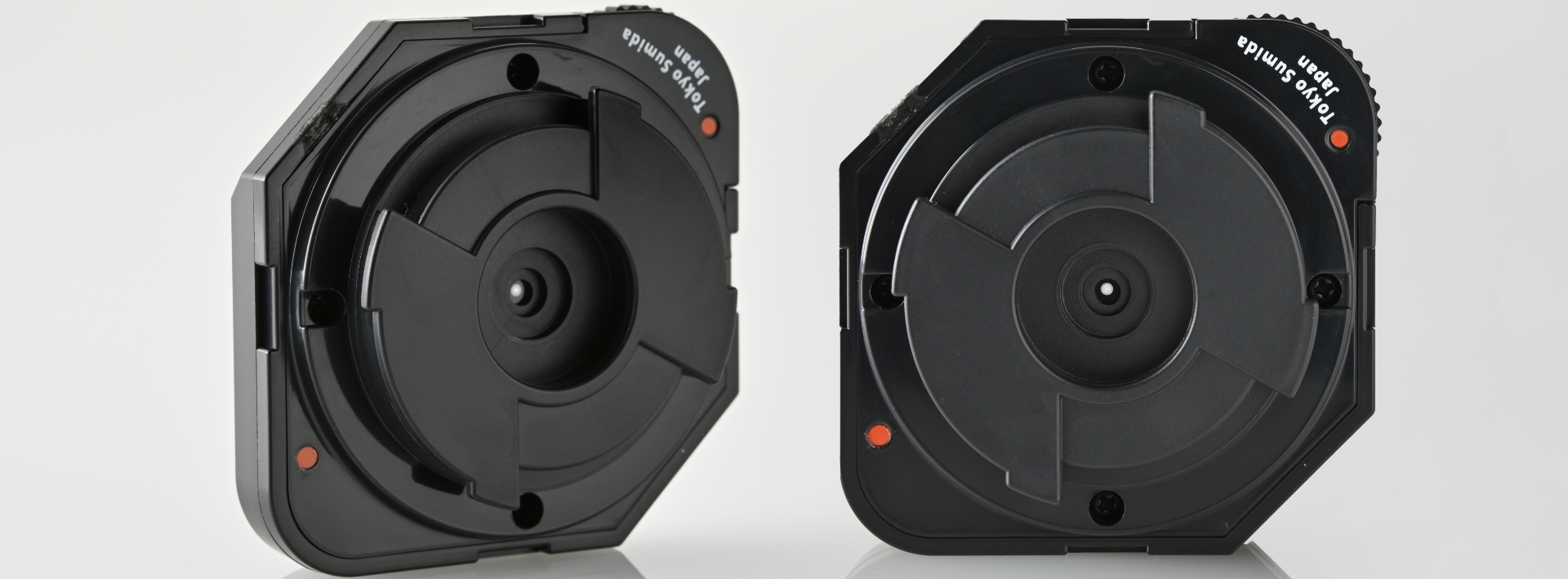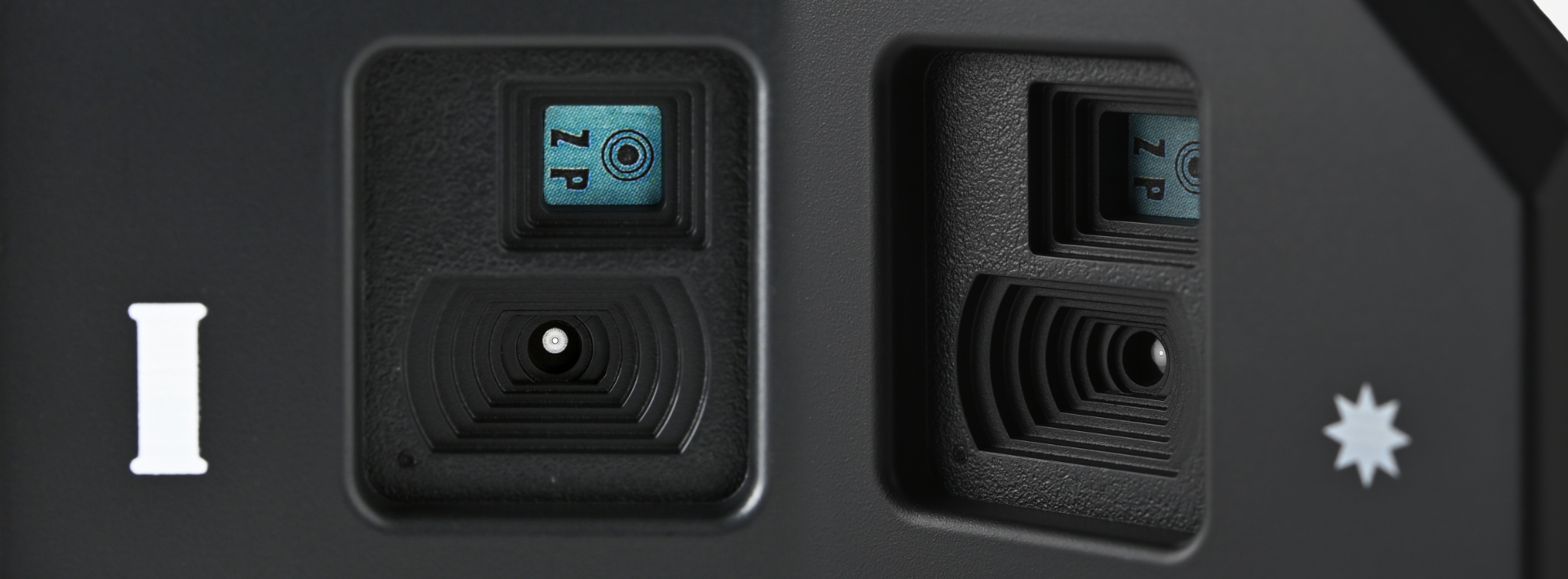Features of the barrel of ZNONZ

External shape of ZNONZ
The external shape of ZNONZ is a deformed hexagon with a pair of notches on the upper right and lower left sides, as seen from the front.
The notches are designed to provide a clear field of view when used with optical rangefinders such as the Leica M series cameras.
Furthermore, ZNONZ can be mounted upside down, and each notch is located in the opposite position so that the field of view is not obstructed in either case.
This is the reason for the deformed hexagonal shape of the ZNONZ.
This is effective for models with optical viewfinders such as Fujifilm’s X-Pro series.
ZNONZ I is available only in black.
ZNONZ II is available in steel (gray) and bronze (copper).
Turret mechanism that allows selection of elements while mounted on the camera

Four types of optical elements, each with different performance, are arranged in a turret configuration for both Type Ⅰ and Type Ⅱ.
Both ZNONZs can be mounted on the camera and the user can select and shoot at will by simply turning a dial.
The Geneva mechanism is used to ensure that each element is set at the correct position on the optical axis.
・
Easy-to-operate selection dial position
When the camera is held in the viewfinder position, the dial for selecting the turret can either be positioned at the upper right corner and operated with the index or middle finger of the right hand, or at the lower left corner and operated with the thumb of the left hand.
In order to enable either of these positions, the ZNONZ I is equipped with a mount compatible with the Leica M-type and can be mounted upside down, taking advantage of its four-prong design.
The ZNONZ logo is readable in either mounting position. Please use it in your preferred operating position.
Leica M Compatible Mount

ZNONZ has adopted a Leica M-type compatible mount for use with a wide variety of cameras, including mirrorless digital cameras as well as film cameras.
This mount, which was introduced with the Leica M3 in 1959, was a groundbreaking invention that enabled a number of new mechanisms that defined the reputation of the M3. It had a profound influence on the development of 35 mm cameras in the following years.
In particular, its mechanism was so precise and complete that it left no room for the development of rangefinder cameras that could escape its patents, forcing competing camera manufacturers around the world to give up on the idea of competing with it and shift their development direction to SLR cameras.
More than 60 years have passed since its appearance, and the patent has expired, but it continues to be respected by many as the de facto standard in the camera world. It is also the most widely used compatible mount adapter among all mounts, including SLR cameras.
In light of this situation, ZNONZ has adopted the Leica M-type compatible mount. And this means that ZNONZ can be used with a wide range of models by using mount adapters offered by many companies (other companies).
Converted focal length of ZNONZ

Both ZNONZ Type I and Type II have a converted focal length of approximately 28 mm. Each zone plate is designed with this focal length.
Although pinhole does not have a concept of focal length, we have designed the zone plates to have an angle of view that is almost equivalent to the focal length of pinhole.
In addition, the mount is designed so that the 28mm frame is displayed when the ZNONZ Ⅰtype is attached to Leica M4-P, M6, and other optical viewfinder models that support a 28mm frame.
